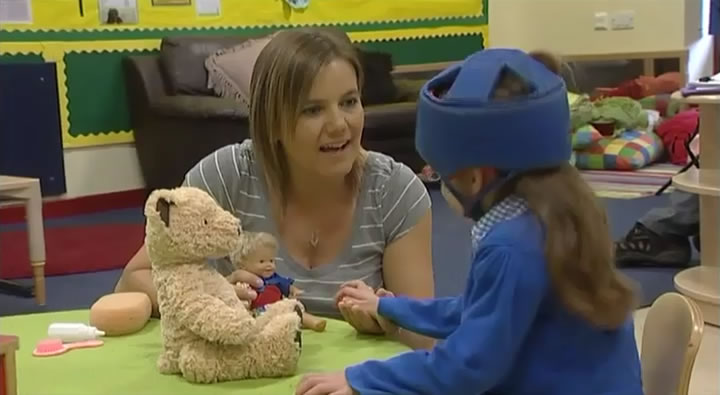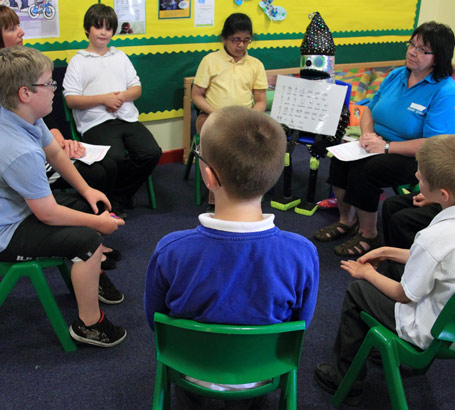
'Pragmatics' is the study of how language is used by people. The assessment of pragmatics has become an important element of language assessment in a range of educational contexts.
These resources will provide you with an opportunity to familiarise yourself with the Pragmatics Profile which was developed to assess how children typically communicate in the context of everyday routines and activities with people they know well.

Use of the Pragmatics Profile, developed by Hazel Dewart and Susie Summers, enables teachers to build up a picture of the child's communicative skills in a variety of everyday situations. This is achieved through a structured interview procedure that the teacher can use with the child's parents, carers, teachers or other key workers.

There are two versions of the Pragmatics Profile for children:
- The Pragmatics Profile of Everyday Communication Skills in Pre-School Children is for use with pre-school children, from the age of nine months up to four years.
- The Pragmatics Profile of Everyday Communication Skills in School-Age Children is for use with school-age children, up to the age of 10 years.
The profiles may be used as part of an initial assessment and as an aid to planning intervention. They are straightforward to administer, taking approximately 30 minutes to complete. They are designed in such a way that they can be used with children with a wide range of learning disabilities.
The manual provides background information on the development and construction of the Pragmatics Profile, together with full administration instructions. There is a set of photocopy masters, comprising the two profiles plus a summary record, which will give you all you need for completing the assessment.
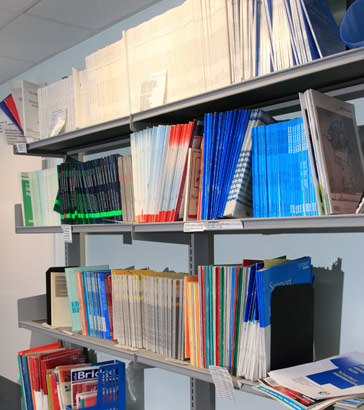
Read about the use and administration of the profile in Chapter 5 of the manual (starting on p.16). Then turn to the profile for pre-school age children.
Read each of the following sections (a summary of the contents of these sections is given on the next page):
Section A: Communicative Functions
Section B: Response to Communication
Section C: Interaction and Conversation
Section D: Contextual Variation.
A full list of the topics covered in each section appears under 'An Outline of the Structure' at the beginning of the profile.

Section A: Communicative Functions – This section covers a range of communicative functions that the child may express.
For example, there are questions about the way the child expresses requests.
Section B: Response to Communication – This section investigates the way the child reacts and responds to communication
from others. For example, questions are asked about the child's understanding of direct requests.
Section C: Interaction and Conversation – This section deals with the way the child interacts with other people and
participates in a conversation. This participation is not necessarily verbal but may involve a range of body signals and behaviours.
Questions ask about the way interactions are initiated, maintained and terminated and about the way conversation can be repaired
when breakdown occurs.
Section D: Contextual Variation – This section is concerned with the way the child's communication varies depending
on context. It asks about different places, people, times of day and about the topics that the child enjoys discussing.
In this video three staff from a special school go through part of the pragmatics assessment in relation to a young girl, Zoe.
As you watch, consider whether you can see a value in doing this kind of profiling at school. Do you think that this type of assessment can lead to the identification of important learning targets? After you have watched the video, read the commentary.
and carers
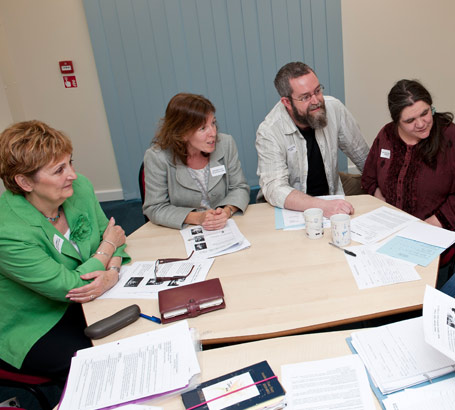
A key feature of engaging with this process is the notion of eliciting views from a range of staff and parents. Why do you think that parents' and carers' perceptions and observations might be crucial for the assessment process? What do you currently do to ensure parents' participation in the assessment process in your context?

The summary sheet (see page 36 of the manual) is used to record the main findings of each section and to identify priorities for intervention. It covers (a) the range of functions expressed by the child and the form of language (eg gesture; vocalisation; words; phrases; sentences); (b) the type of adult language that typically evokes a response from the child and the nature of the child's response; (c) the ways in which the child contributes to initiating and maintaining interactions; and (d) how communication varies with time, topic, situation and communication partner.
The findings of the Pragmatics Profile are not summarised numerically but in descriptive form. It helps to provide information and insights that will be useful in planning and carrying out interventions to promote the child's communicative abilities.
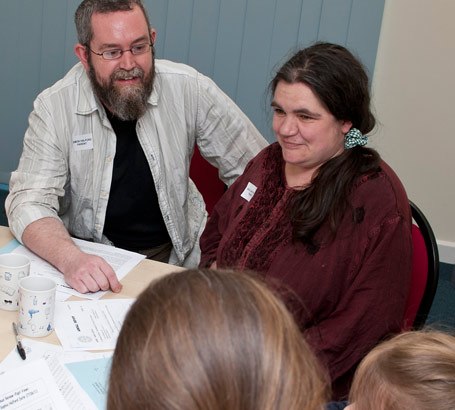
Work with some colleagues to complete a profile in relation to a child you know. Depending on the child's level of development, choose either the pre-school or the school-age version. If you wish, you may use one version but include some questions from the other. You may choose to omit or modify the wording of some questions if you consider that they are not appropriate for a particular child.
